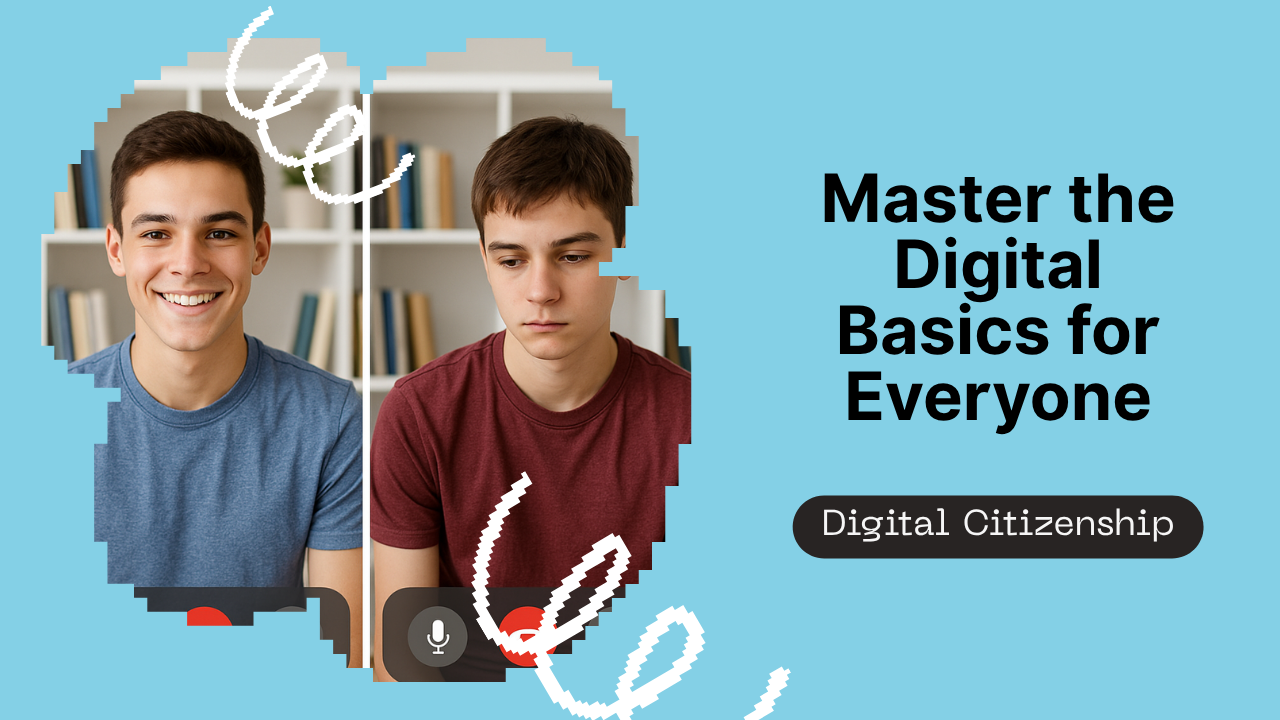


Designed for elementary, middle, and early high school students to learn digital safety, online etiquette, and responsible technology use.
This course teaches kids and teens the must-know digital skills to stay safe, respectful, and smart online.
Foundational Digital Citizenship for Kids, Teens, and Families.
By the end of this lesson, learners will be able to:
Define what the internet is in simple terms.
Understand how the internet connects people, devices, and information.
Identify common uses of the internet (education, communication, entertainment, commerce).
Recognize that not everything on the internet is safe or true.
Know basic tips for safe internet use.
This lesson blends physical safety (how you use the device) with digital awareness (how the device impacts your well-being).
By the end of this lesson, learners will be able to:
Understand what “privacy” means in the digital world.
Identify personal information that should be kept private.
Recognize common online risks related to sharing personal details.
Learn how to adjust privacy settings on devices, apps, and platforms.
Practice safer habits when posting, chatting, or creating online content.
By the end of this lesson, learners will:
Understand what "screen time" means and the types (learning, entertainment, social).
Recognize signs of too much screen time (eye strain, irritability, sleep problems).
Learn the importance of tech-free routines, sleep hygiene, and balance.
Create personal or family screen-time boundaries and “tech-free zones.”
Build awareness of when, why, and how we use screens — not just how long.
Apply what yo have learned
You just finished your homework and have 45 minutes of free time. You want to watch YouTube, but you also promised to walk the dog and help set the table.
By the end of this lesson, learners will:
Understand what personal information is and why it must be protected.
Learn the importance of strong, unique passwords.
Be able to identify safe vs. unsafe information to share online.
Practice creating strong passwords and managing them safely.
Know not to share passwords, even with friends, and why.
By the end of this lesson, learners will:
Understand what it means to show kindness online and why it matters.
Recognize how online actions (posts, comments, likes) leave a digital footprint.
Learn that what we say or share online can impact others — and last a long time.
Reflect on how to use technology in positive, respectful, and empathetic ways.
Practice thinking before posting: Is it true? Is it kind? Is it necessary?
By the end of this lesson, learners will:
Understand what “fake news” is and how it spreads.
Recognize red flags of misinformation and clickbait.
Learn how to fact-check headlines, images, and videos.
Build critical thinking skills when reading or sharing online content.
Know where to go for trusted, age-appropriate information.
By the end of this lesson, learners will:
Understand what cyberbullying is and what forms it can take.
Learn how cyberbullying affects others emotionally and mentally.
Recognize signs that someone is being bullied online.
Identify what to do if they or someone they know is being cyberbullied.
Practice how to respond, report, block, and support others online.
Apply it exercise:
A friend tells you their new password is “1234school” and they use it for all their games and apps.